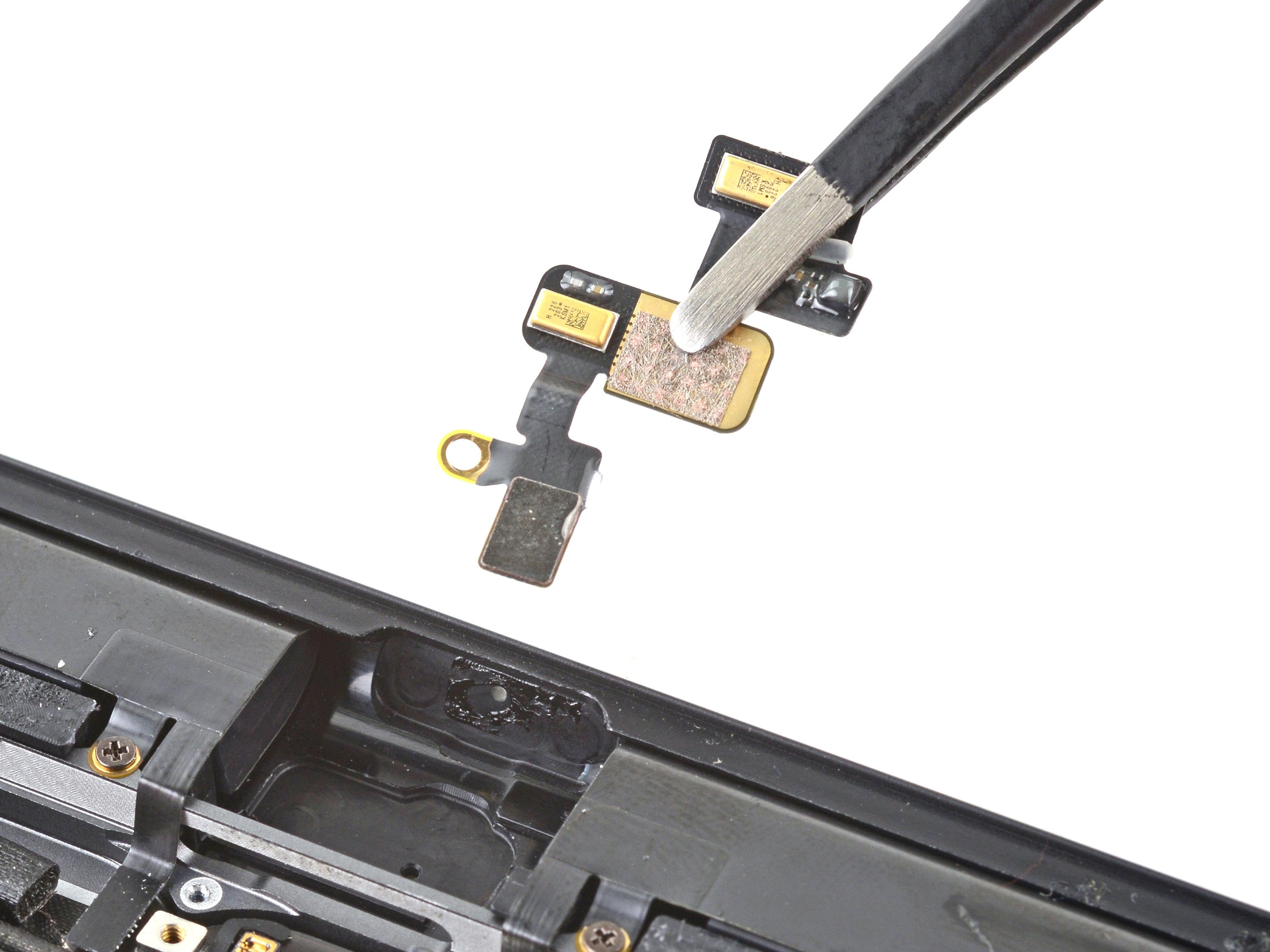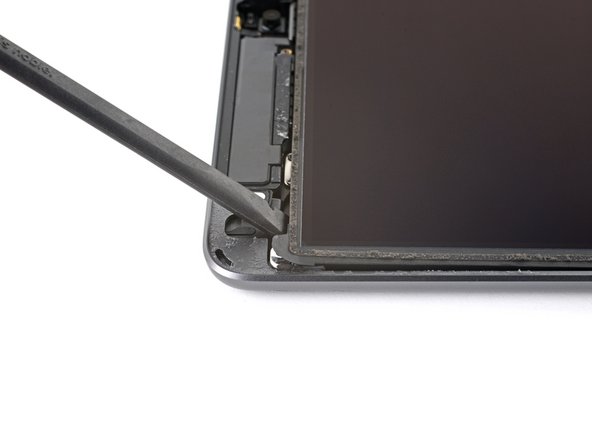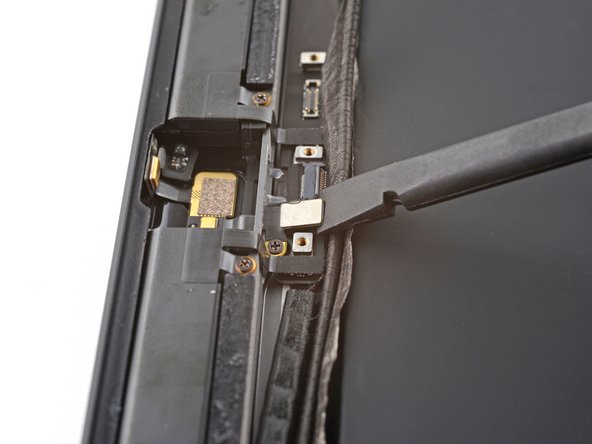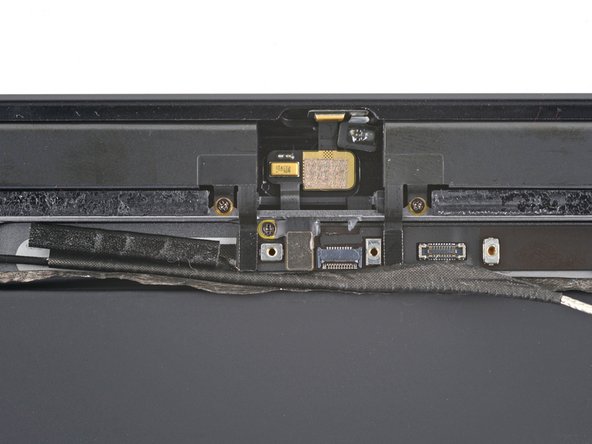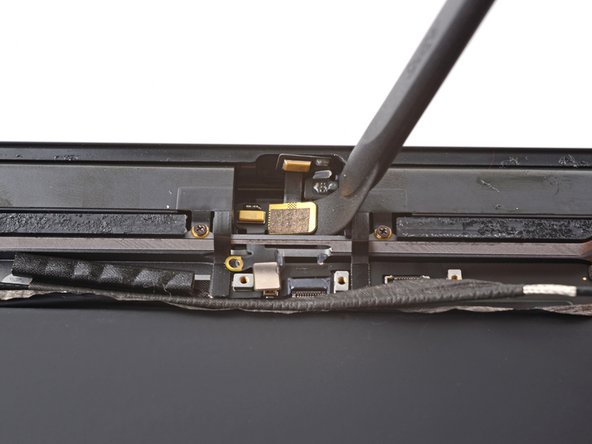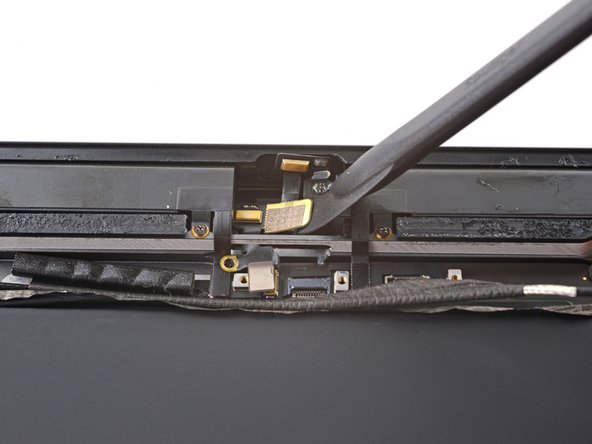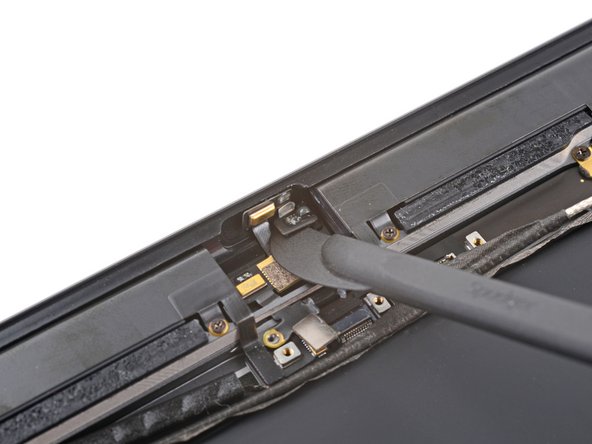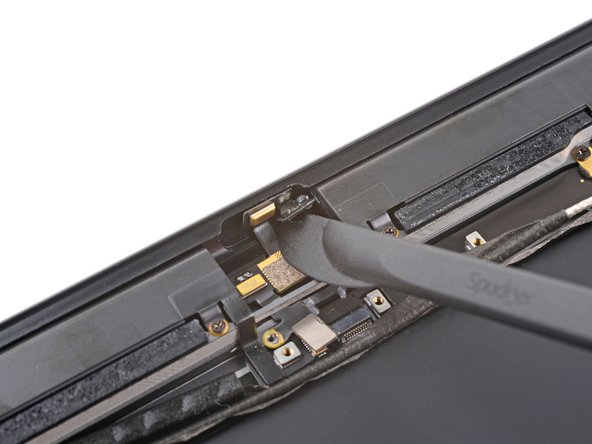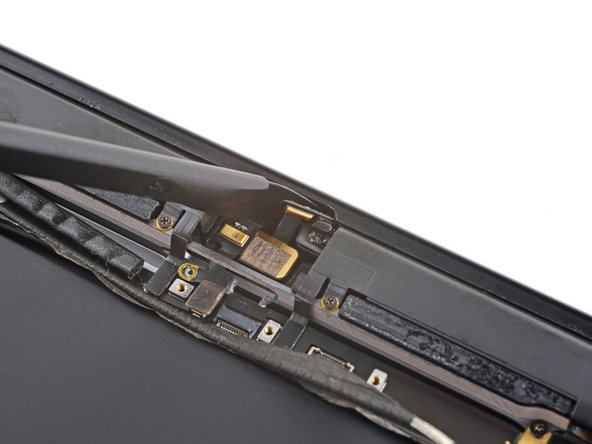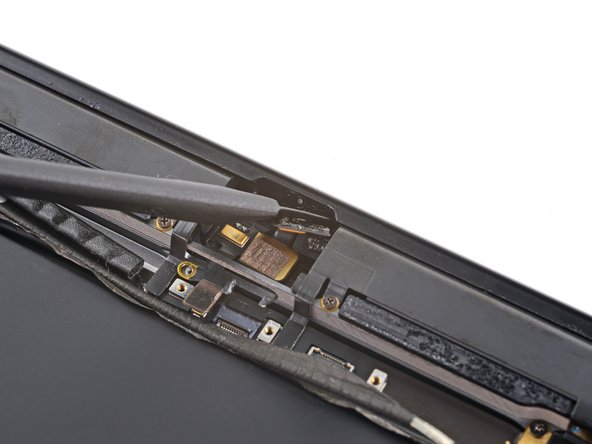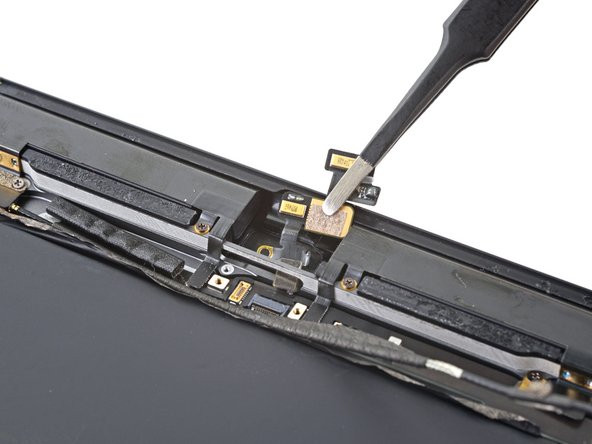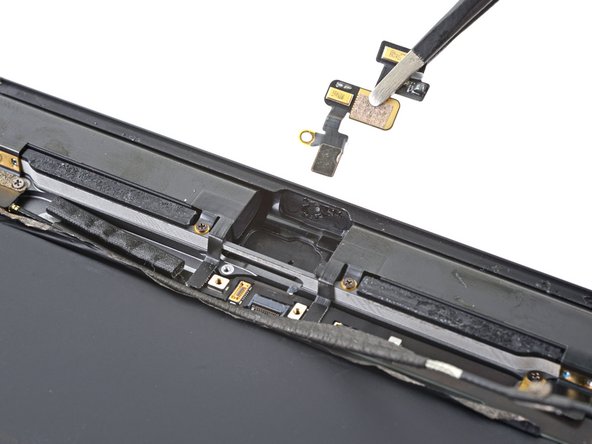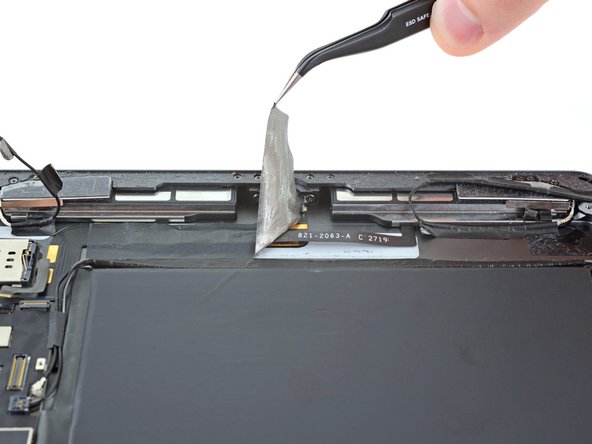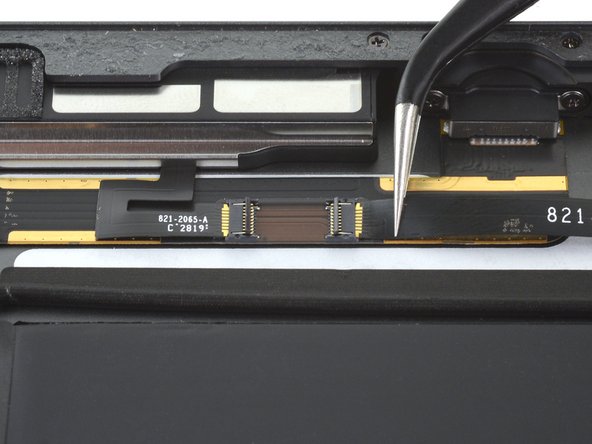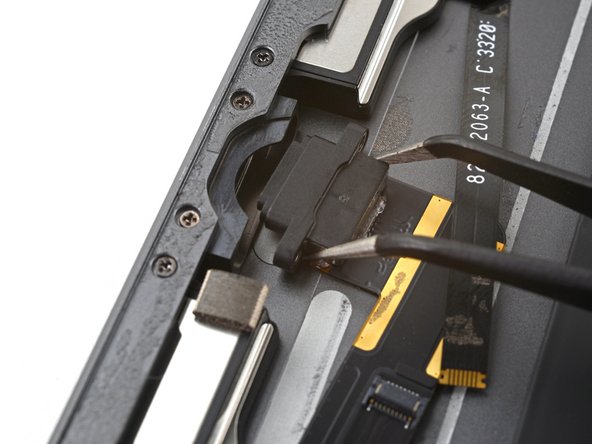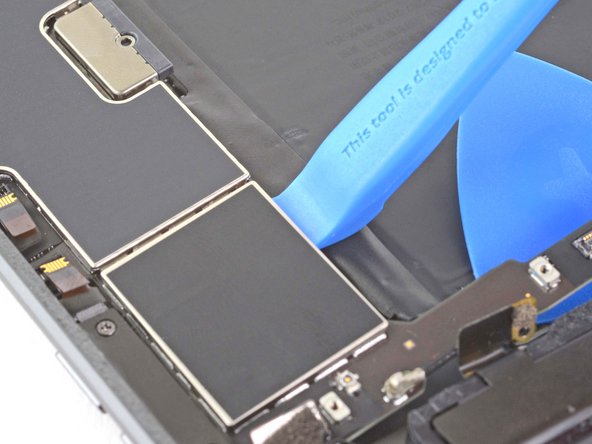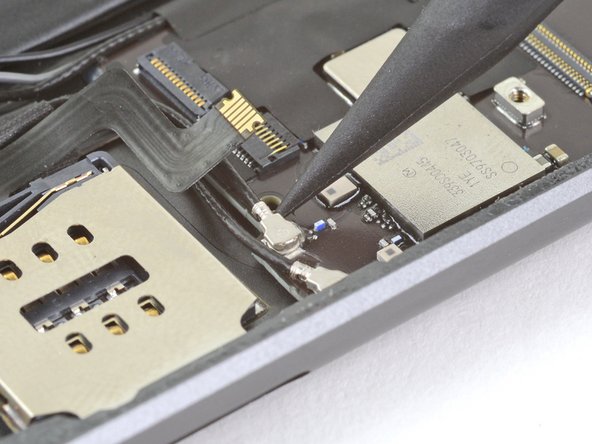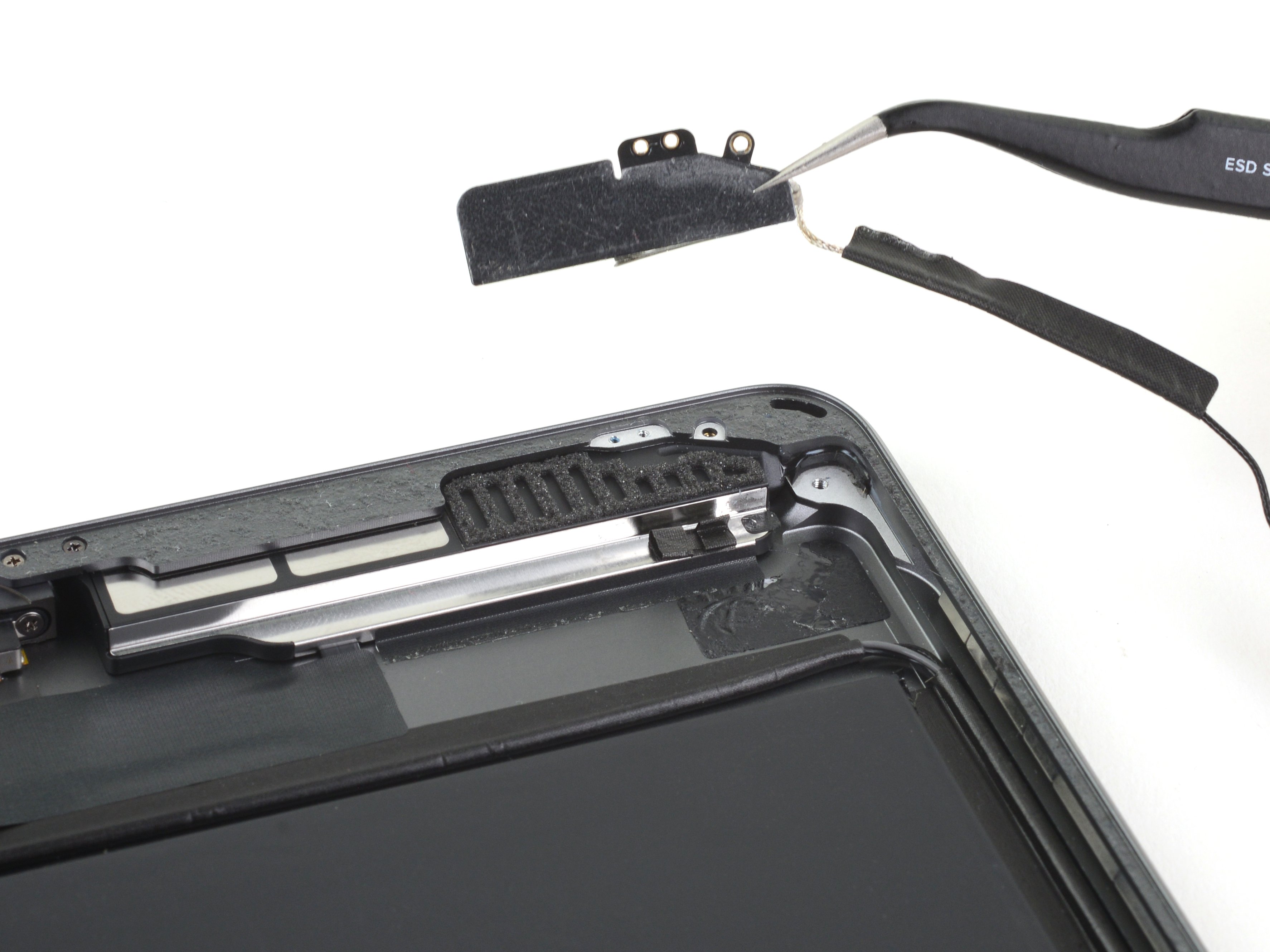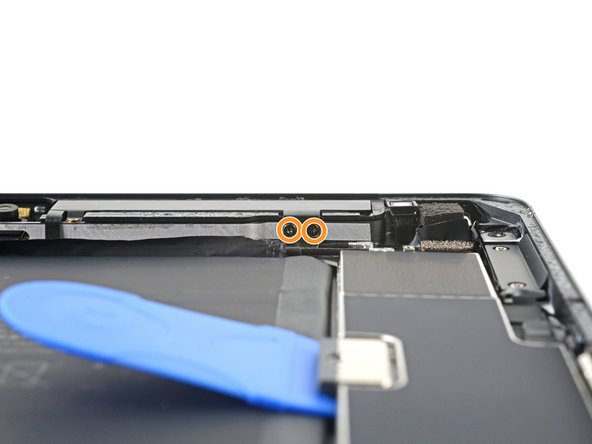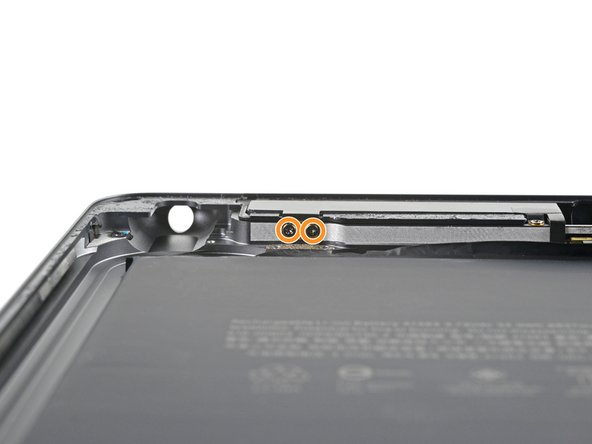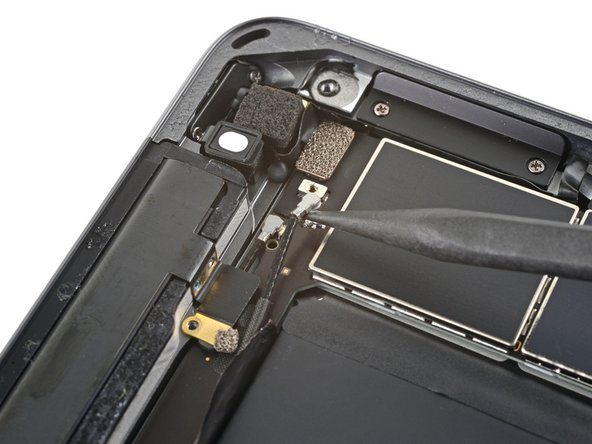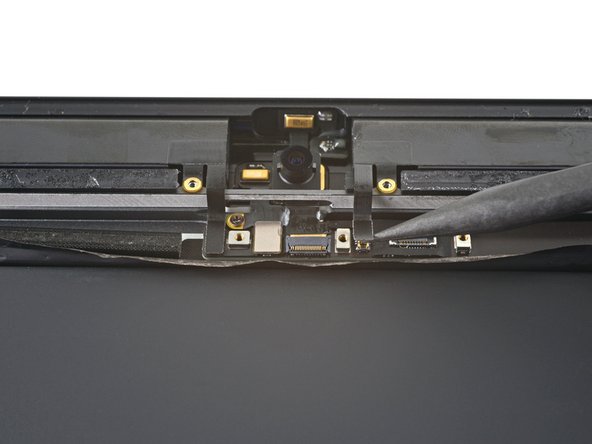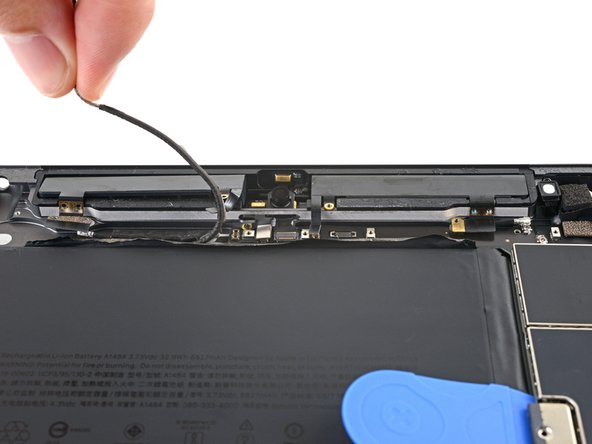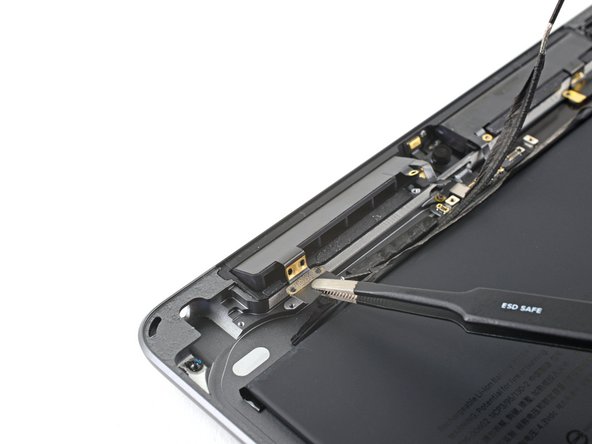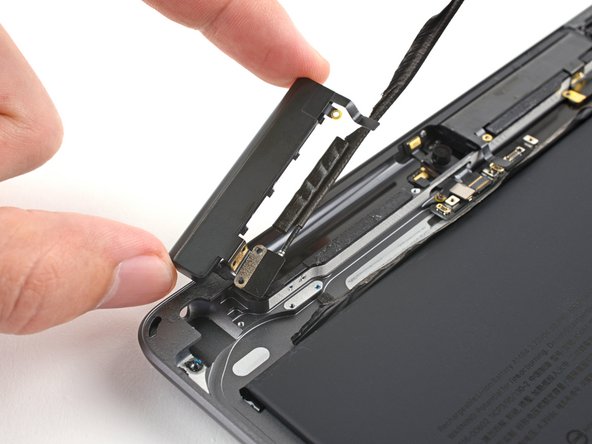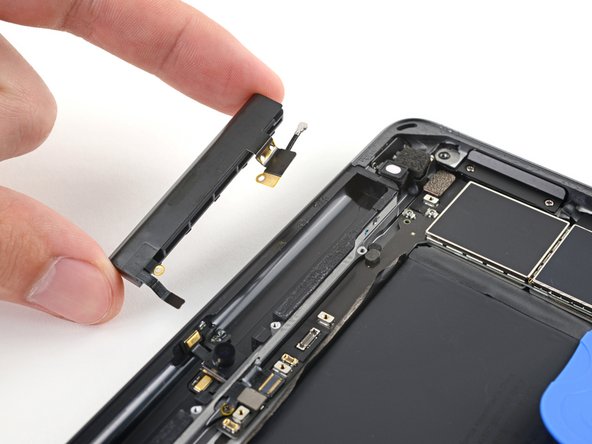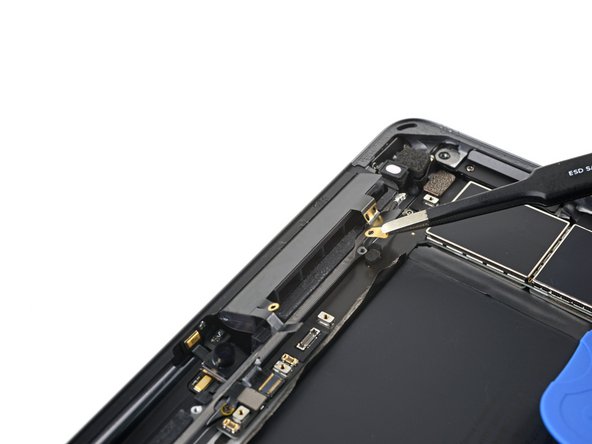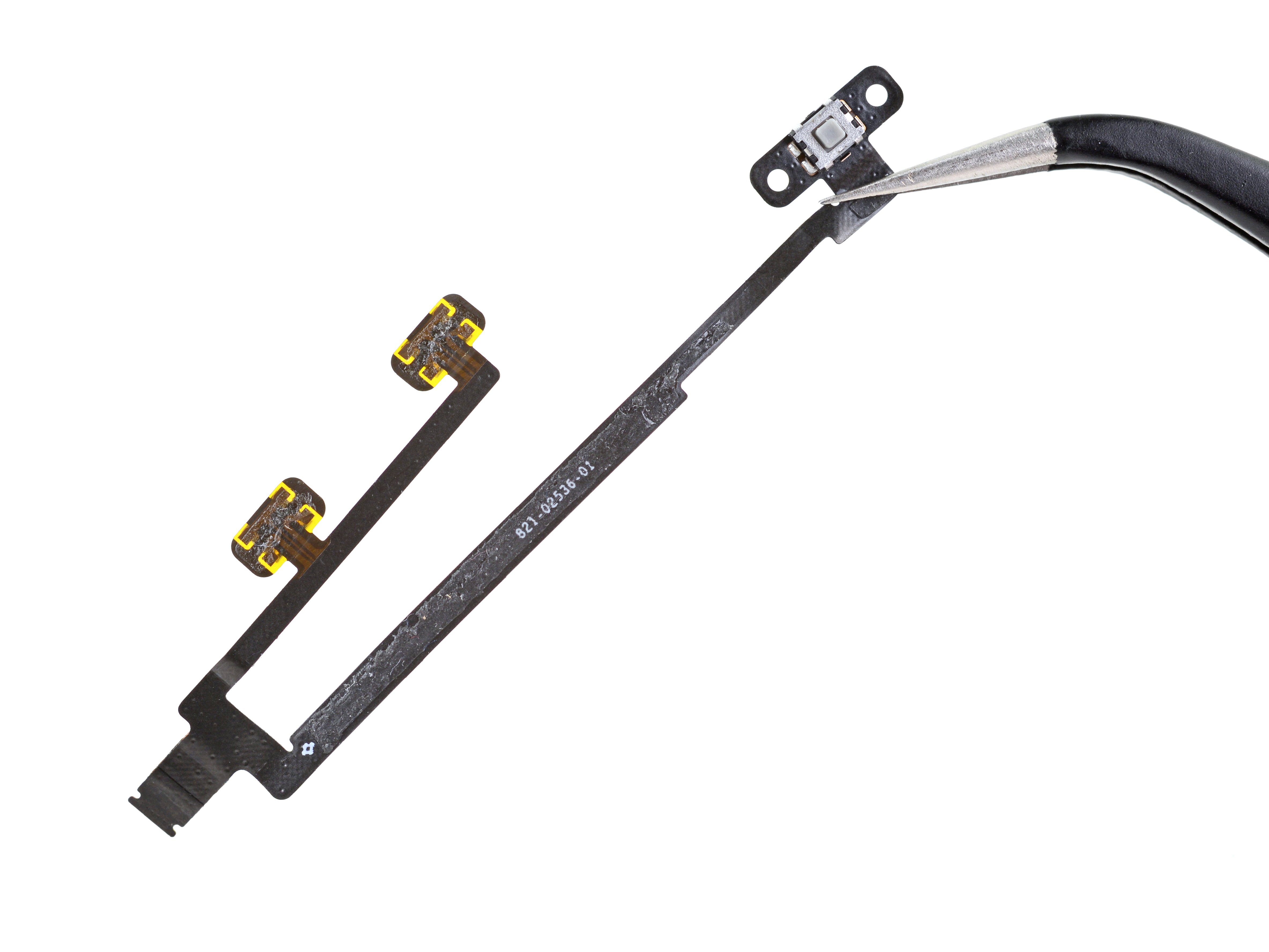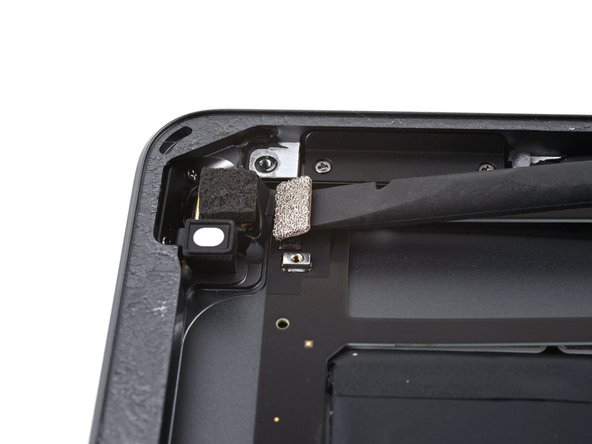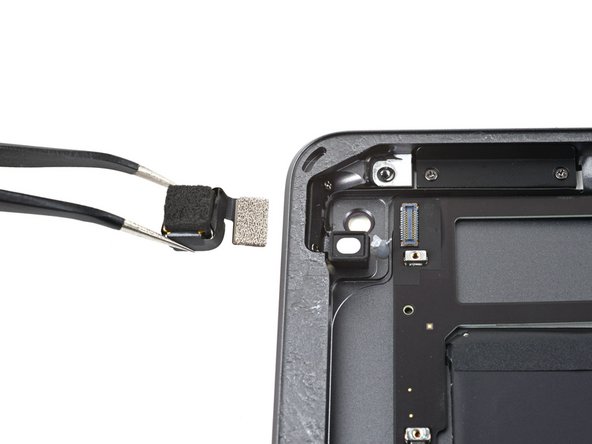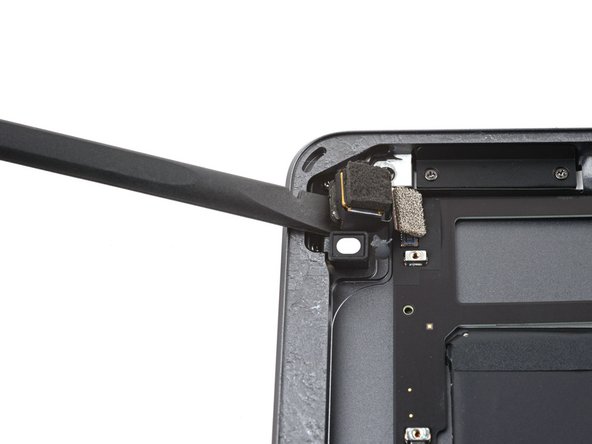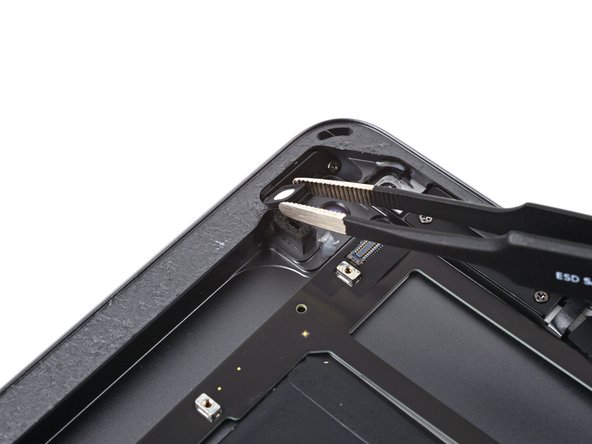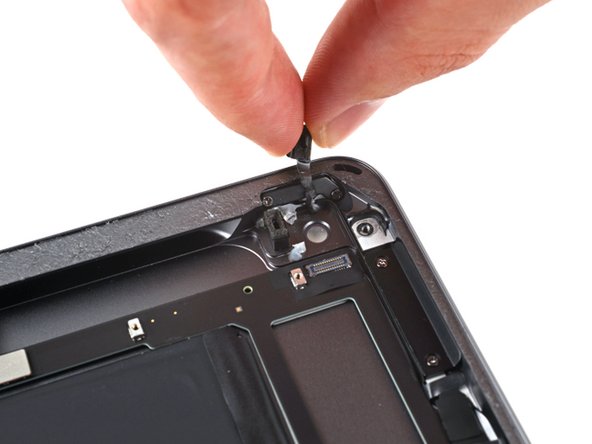Duration: 45 minutes
Steps: 72 Steps
Hey there, just a quick heads up! Make sure to juice down that battery to below 25% before diving into your iPad’s insides. Safety first, right?
Ready to tackle replacing the microphone assembly in your iPad 9 LTE? Awesome! Just a heads up, this guide is specifically for the LTE model. If you have the Wi-Fi version, you might want to check out a different guide. Before diving in, it’s super important to drain your battery below 25%. This little step helps to keep things safe in case the battery gets a bit too friendly during the repair. If your battery looks like it’s been working out and is swollen, be sure to handle it with care. When you’re isolating the battery, watch out for those battery contacts—they can be fragile! If you decide to skip isolating the battery, use metal tools only when absolutely necessary (like for those pesky screws) to avoid any short-circuits. Lastly, some of the photos you’ll see here might be from a different model and could look a bit different, but don’t worry—they won’t mess with the steps you need to follow. Now, let’s get started!
Step 1
Make sure to power off your iPad before diving into the repair.
– Warm up an iOpener and press it against the left edge of your iPad for a solid two minutes to get things nice and toasty.
Tools Used
Step 2
– While you’re giving the adhesive some time to do its thing, make sure to keep an eye out for these areas that are a little extra sensitive to prying:
– Front camera
– Ambient light sensors
– Antennas
– Display cables
Step 3
The next three steps walk you through the Anti-Clamp, a handy tool we created to make opening your device a breeze. If you’re not using the Anti-Clamp, feel free to skip ahead three steps for another way to get the job done.
For a full rundown on how to handle the Anti-Clamp, take a look at this guide.
If your iPad’s surface is a bit too slick for the Anti-Clamp to grip properly, slap on some tape to give it a better hold.
– Gently pull the blue handle back to free the Anti-Clamp’s arms.
– Set your iPad on a stable object so it sits evenly between the suction cups.
– Place the suction cups close to the center of the left edge—one up top and one down below.
– Keep the bottom of the Anti-Clamp steady and give the top cup a good press to create that sweet suction.
Step 4
– Grab the blue handle and pull it forward to lock those arms in place.
– Give the handle a full 360-degree twist clockwise, or keep turning until those suction cups start to stretch out.
– Keep an eye on the suction cups to make sure they stay lined up. If they start to drift apart, just loosen them a bit and realign the arms.
Step 5
Turn no more than half a twist at a time, then chill for a minute. Let the Anti-Clamp and some patience do their magic!
Want the full scoop on how to rock a hair dryer like a pro? Dive into this guide.
If the Anti-Clamp isn’t giving you enough wiggle room, just heat things up a bit more and twist the handle clockwise half a turn.
– Wait for about a minute so the adhesive can relax and give you that sweet little gap to work with.
– Not feeling the heat? Grab a hair dryer and warm up the left side of your iPad. It’ll help loosen things up.
– When the Anti-Clamp does its magic and creates enough space, gently slide an opening pick underneath the digitizer.
– Skip the next step.
Step 6
If your screen is smashed to bits, try sticking a layer of clear packing tape over it to give the suction cup something to grip. You can also use some super strong tape instead of the suction cup if needed. And if all else fails, go ahead and superglue the suction cup right onto the cracked screen for a solid hold.
– Once the screen feels a bit warm, grab a suction handle and attach it to the left edge, as close to the border as you can manage.
– Gently lift the screen with the suction handle to create a small gap between the digitizer and the frame.
– Slide an opening pick into that gap you’ve just created between the digitizer and the frame.
Tools Used
Step 7
No need to stress if you spot the opening pick peeking through the digitizer — just give it a gentle tug and pull it out. The LCD screen should be just fine, but be mindful, as you might leave some sticky adhesive behind that could be a bit of a hassle to clean up.
– Pop a second opening pick into the gap you just made.
– Gently slide that pick down toward the bottom-left corner of the iPad to loosen the adhesive.
– Keep the pick tucked in the bottom-left corner so the adhesive doesn’t sneak back together.
Step 8
– If your opening pick gets hung up in the adhesive, just roll it smoothly along the edge of the iPad to keep that glue from winning the battle.
Step 9
– Gently slide your first opening pick towards the top-left corner of your iPad. This will help you break through that sticky adhesive, but don’t rush it!
– Once you’re in the top-left corner, leave the pick there. It’ll keep the adhesive from sealing back up, making your job a whole lot easier.
Step 10
– Warm up an iOpener and let it work its magic on the top edge of your iPad for two minutes.
Tools Used
Step 11
Be careful not to insert the pick more than 7mm in, or you might mess with that little ambient light sensor. Keep it gentle!
– Gently spin the pick around the top-left corner of your iPad to loosen up the adhesive. Take your time—no need to rush!
Step 12
Keep the pick away from sliding over the front camera lens to avoid any accidental damage. We’ll guide you through the steps to keep that camera safe and sound.
– Gently slide that opening pick along the top edge of your iPad, and stop just shy of the front camera—you’re doing great!
Step 13
– Gently pull the pick out until just the tip is nestled between the digitizer and the frame.
– Slide that pick above the front camera to break free the adhesive.
– Keep the pick close to the right side of the front camera as you move on to the next steps.
Step 14
– Slide that trusty pick toward the top-right corner of your iPad to fully break free the top adhesive. You’re doing great!
– To keep that adhesive from getting cozy again, just leave the pick hanging out in the top-right corner for now.
Step 15
– Warm up that iOpener and give it a cozy spot on the right edge of your iPad for a solid two minutes. You’re doing great!
Tools Used
Step 16
Careful now—only slide the pick in up to 4 mm to keep the ambient light sensor safe and sound.
– Gently glide the pick around the top-right corner of the iPad to break free the adhesive. Keep it smooth and steady for a successful separation!
Step 17
The display cables hang out about halfway up from the bottom of your iPad. Slide carefully and stop once you’re around three inches from the bottom to avoid any surprises.
– Pop in a fresh opening pick and glide it smoothly to the center of the iPad’s right side.
Step 18
– Warm up an iOpener and stick it to the bottom edge of your iPad for a solid two minutes to loosen things up.
Tools Used
Step 19
Be careful not to spin the pick all the way around the corner; you wouldn’t want to accidentally put a dent in that antenna!
Check out the third image! It points out the bottom-left antenna hiding snugly under the digitizer.
– Gently slide the bottom-left pick into the bottom-left corner to break apart that sticky adhesive.
– Leave the pick in place before moving on to the next step.
Step 20
When sliding the pick, make sure it’s heading toward the home button, not away from it. Going the wrong way might mess with the antenna, and we don’t want that!
If you find yourself needing to slide that trusty pick over this spot again, just pull it out and pop it back in at the bottom-left corner. You’ve got this!
– Slide your opening pick into the gap you made at the bottom edge of the iPad.
– Gently glide the pick over the antenna, but make sure to stop just before you hit the home button.
– Leave the pick just to the left of the home button before moving on to the next step.
Step 21
– Carefully slide your opening pick into the gap you’ve just created. No need to rush, take it slow!
– Now, gently move the pick underneath the home button and towards the bottom-right corner. Keep it light, just the tip of the pick should be nestled between the digitizer and the frame.
Step 22
Slide the pick gently towards the home button, but don’t push it away from it. You don’t want to mess with the antenna!
If you find yourself needing to slide that pick over this section once more, just pop it out and reinsert it from the bottom-right corner. You’ve got this!
– Slide the pick back in and gently nudge it towards the home button to fully break through the bottom adhesive.
– Rest the pick just to the right of the home button before moving on.
Step 23
– Warm up that iOpener and press it against the right edge of your iPad for about two minutes. Give it some love!
Tools Used
Step 24
Take it slow and steady with this one! Make sure the adhesive is nice and toasty, and that you’ve carefully loosened all of it with your trusty opening pick. If things get tricky, don’t hesitate to pause and give it another heat-up!
If you hit a stubborn spot, just give the edges another warm-up and gently wiggle your opening pick around them.
– Gently twist those opening picks in the left corners of your iPad to nudge the digitizer up a bit, making sure to loosen the last of that pesky adhesive along the way.
Step 25
– Gently lift the left edge of the digitizer to help peel away the adhesive from the right edge of your iPad. You’re doing great!
Step 26
Watch out for those display cables! Use your opening pick carefully to avoid any accidental snags.
– While holding the digitizer steady, gently slide an opening pick between the two display cables to break free the last bit of adhesive. Take your time, and remember, you’ve got this!
Step 27
– After you’ve successfully separated all that sticky adhesive, gently swing open the digitizer like a charming book and lay it down parallel to your iPad.
– When it’s time to put everything back together, give that leftover adhesive a good scrub from the frame—and from the digitizer if you’re reusing it—using some isopropyl alcohol. And don’t forget to stick on our adhesive strips or pre-cut adhesive cards for a secure seal!
– Keep an eye on those display cables during reassembly. Make sure they’re neatly tucked away beneath the LCD screen to avoid any accidental mishaps.
Step 28
– Gently use tweezers or your fingers to peel away any tape hiding those sneaky LCD screws.
Tools Used
Step 29
– Grab your Phillips #00 screwdriver and gently take out the four 4.2 mm screws holding the LCD screen in place.
Tools Used
Step 30
The LCD is gently stuck to the frame, so handle it with care!
– Slide a spudger gently between the frame and the upper-right corner of the LCD.
– Carefully work the spudger to loosen and lift the adhesive without rushing.
Tools Used
Step 31
– Now, let’s tackle the top-left corner of the LCD just like we did before!
Step 32
Hold off on fully detaching the LCD here—it’s still hanging on by that sneaky little flex cable!
– Gently use the flat end of a spudger to loosen the LCD just enough so you can get a good grip with your fingers.
– Carefully flip the LCD like turning a page in a book, lifting near the camera and folding it over the home button side of the frame.
– Place the LCD face down on a clean, soft, lint-free surface to give yourself easy access to the display cables.
Tools Used
Step 33
– Grab your trusty Phillips screwdriver and gently unscrew the 2.3 mm-long screw that’s holding the battery connector snugly against the logic board. You’ve got this!
Step 34
Check out these photos to see what the battery connector looks like beneath the logic board. Use these images as your trusty guide while you carefully unplug that battery!
You’ll notice those clever cantilever springs on the logic board that press down on the battery contact pads. Since both the logic board and battery are glued in place, you’ll want to slide something thin and flexible between the contact points to safely disconnect the battery.
Step 35
Handle the battery with care when using a battery blocker! Those contacts can be a bit fragile and might bend or break, leading to some serious trouble. Stay sharp and keep it safe!
Make sure the logo on the battery blocker is facing upwards—no upside-down magic tricks here!
Avoid shoving the battery blocker under the connector with too much force. If it’s being stubborn, try sliding a playing card under the logic board to gently disconnect the battery instead.
The battery blocker or playing card should glide under the logic board smoothly, without any hiccups. Once in place, it should sit at about a 15-degree angle, chillin’ comfortably.
– Gently slide the battery blocker under the logic board’s battery connector at a cool 35-degree angle, like you’re giving it a little nudge.
– Keep that battery blocker in place while you tackle the rest of the job. You’ve got this!
Tools Used
Step 36
– Grab your trusty Phillips screwdriver and gently unscrew those three tiny 1.4 mm-long screws holding the display cable bracket in place. You’re doing great!
Step 37
– Carefully take off the display cable bracket to keep things moving smoothly.
Step 38
– Grab your trusty spudger and gently lift up the LCD cable press connector. You got this!
– When it’s time to reconnect those press connectors, just take a moment to align them carefully. Start by pressing down on one side until you hear that satisfying click, then do the same on the other side. Remember, no middle pressing! If things get a little wonky and the connector isn’t lined up just right, you might bend some pins, and trust me, that’s not a good look. Keep it cool and steady!
Tools Used
Step 39
– Carefully lift the LCD off completely and lay it down face-first on a clean, soft, lint-free surface to keep it safe and sound.
Step 40
– Grab a pair of tweezers and gently peel away the tape that’s keeping the home button cable ZIF connector under wraps. You’ve got this!
Tools Used
Step 41
– Grab a spudger, an opening tool, or even your fingernail to gently flip up the tiny, hinged locking flap on the home button cable’s ZIF connector.
Tools Used
Step 42
– Grab your trusty tweezers and gently wiggle that home button ribbon cable right out of the ZIF connector. You’ve got this!
Tools Used
Step 43
To keep your iPad in tip-top shape, make sure to gently pry only on the connectors themselves. Avoid poking around the socket on the logic board – we want to keep everything safe and sound!
– Grab that trusty spudger and gently wiggle the flat end under those two digitizer cable connectors. Give them a little pry to disconnect them like a pro!
Tools Used
Step 44
Be careful not to accidentally damage or rip the home button ribbon cable while working—it’s a delicate little thing!
– Grab your trusty spudger and gently nudge up the buffer block located in the bottom-right corner of the iPad. It’s like giving it a little boost!
– Once it’s up and away, go ahead and remove that buffer block with ease.
Tools Used
Step 45
The home button cable is held down with a touch of adhesive magic.
– Grab your trusty tweezers and gently lift the home button cable away from the frame with some smooth moves.
Tools Used
Step 46
Grab an opening pick to gently slice through any stubborn adhesive still holding the front panel assembly to the frame.
Without the right insulation, parts of the digitizer might short out against other components, leading to touch screen hiccups.
This insulation is super sneaky—it’s invisible to the naked eye and not the same as the foam dust barrier strips you see on many iPads.
– Time to kick off the repair! Start by gently removing the front panel assembly.
– If your new display is acting a bit quirky with ‘ghost’ or ‘phantom’ touches, no worries! A little layer of super thin insulating tape, like Kapton tape, can help out. Just place it on the highlighted spots at the back of the panel. Good news: our replacement digitizers come prepped with the right insulation, so you shouldn’t need to add any tape!
– Now, during reassembly, make sure to clear away any leftover adhesive from your iPad. Give the glued areas a good clean with some high concentration isopropyl alcohol (90% or more) and a lint-free cloth. This step is crucial for making sure the new adhesive sticks like a champ!
– Before sealing everything up, test out your iPad’s functions and apply those pre-cut adhesive strips on the back of the display using our handy adhesive application guide. You’re almost there!
Step 47
– Gently remove the LCD buffer tape from the top bracket—like peeling off a sticker, but with a little more care!
Step 48
– Grab your trusty Phillips #00 screwdriver and let’s tackle those five screws holding down the upper component bracket!
– You’ll find three screws that are a neat 1.4 mm long.
– Plus, two additional screws that stretch out to 1.9 mm long.
– Once you’ve got those out, we’ll be one step closer to your repair success!
Tools Used
Step 49
– Gently use the pointed end of your spudger to lift up the upper component bracket. Once it’s loose, you should be able to grab it with your fingers and keep going!
Tools Used
Step 50
– Gently use your fingers to peel off the upper component bracket from the tape—no need for a superhero grip here!
– Once you’ve freed it, go ahead and remove the upper component bracket with ease.
Step 51
– Carefully remove any tape that’s hiding the left ambient light sensor’s ZIF connector. Let’s get that sensor ready for action!
Step 52
– Gently use the tip of a spudger, an opening tool, or even your fingernail to flip up the tiny hinged locking flap on the left ambient light sensor’s ZIF connector.
Tools Used
Step 53
– Grab your trusty tweezers and gently wiggle the left ambient light sensor cable straight out of the ZIF connector — nice and easy does it!
Tools Used
Step 54
The left ambient light sensor is gently stuck to the frame.
– Grab your trusty tweezers or your nimble fingers and gently pluck that sensor right out of the frame! You’ve got this!
Tools Used
Step 55
– Grab your tweezers and carefully pick off any sticky adhesive left hanging out on the frame.
Tools Used
Step 56
– Gently lift any tape covering the headphone jack’s press connector to reveal the hidden connections.
Step 57
– Gently slide the flat end of your spudger under the headphone jack’s press connector to lift and unplug it. Easy does it!
Tools Used
Step 58
The headphone jack cable has a gentle bond with the frame, so it’s not going to bolt away on you!
– Gently lift the headphone jack cable off the frame using tweezers or your fingers—easy does it!
Tools Used
Step 59
– Grab your trusty Phillips screwdriver and twist out the 3.3 mm screw holding the headphone jack in place on the frame.
Step 60
– Grab your tweezers and gently wiggle the headphone jack out of its cozy spot, then take it out.
Tools Used
Step 61
– Gently peel away any tape that’s playing hide-and-seek over the front camera’s ZIF connector.
Step 62
– Gently use the spudger’s tip, an opening tool, or even your trusty fingernail to lift the tiny, hinged locking flap on the front camera’s ZIF connector. You’ve got this!
Tools Used
Step 63
– Grab a trusty pair of tweezers and gently tug the front camera cable straight out of the ZIF connector. You’ve got this!
Tools Used
Step 64
– Warm up that iOpener and place it on top of the iPad for a cozy 90 seconds.
Tools Used
Step 65
If you’re struggling to break apart the adhesive, try cranking up the heat a bit more and give it a go from different angles. You’ve got this!
– Slide the flat end of a spudger between the front camera and the frame.
– Gently lift to break the adhesive’s grip.
– Carefully use tweezers to pop the front camera out of its cozy spot.
Step 66
– Grab your trusty spudger and gently pry up to disconnect the microphone’s press connector. You’ve got this!
Tools Used
Step 67
– Grab your Phillips #00 screwdriver and carefully unscrew the tiny 1.3 mm screw holding the microphone assembly in place.
Tools Used
Step 68
Heads up! The microphone assembly is stuck to the frame, so take a gentle approach when you’re detaching it.
– Warm up your iOpener and gently press it against the microphone assembly for about two minutes. Let the heat do its magic, and you’ll be all set to move on to the next step.
Tools Used
Step 69
Having a hard time getting that adhesive to give? Just heat things up a bit more and give it some time to loosen up. Patience is key!
– Slide a halberd spudger gently between the frame and the bottom part of the microphone assembly.
– Give the halberd spudger a little twist to loosen up that stubborn adhesive.
Tools Used
Step 70
– Slide a halberd spudger gently between the frame and the middle section of the microphone assembly.
– Give the halberd spudger a little twist to break up that stubborn adhesive.
Tools Used
Step 71
– Slide a halberd spudger gently between the frame and the top edge of the microphone assembly, close to the frame’s border.
– Give the halberd spudger a little twist to loosen up that stubborn adhesive.
Tools Used
Step 72
– Put your device back together by following these steps in reverse.
– Remember to recycle your e-waste responsibly at an R2 or e-Stewards certified facility.
– If things didn’t quite work out, try some basic troubleshooting or visit our iPad 9 Answers community for tips.
– And if it’s still giving you trouble, you can always schedule a repair!
Tools Used
Success!
